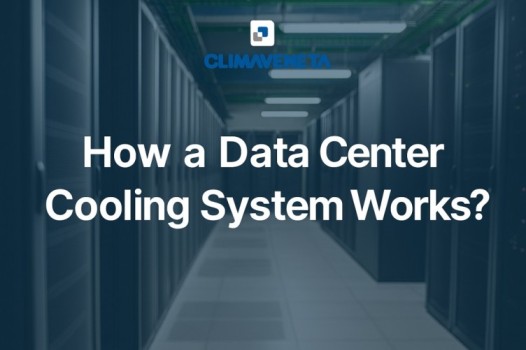


Understand how a data center cooling system maintains safe temperatures using air cooled chillers. Learn the process, benefits, and why it’s crucial
Modern data centers are the unseen heroes of our connected world. Whether you’re streaming your favorite series, backing up files to the cloud, or relying on real-time AI analytics, your data flows through complex server farms working around the clock. But behind this seamless digital experience lies an invisible yet vital component: the Data Center Cooling System.
With India and other emerging markets witnessing a dramatic surge in data consumption and cloud adoption, data centers are becoming increasingly dense and power-hungry. The heat generated by this IT equipment is intense and continuous. Without the right Data Center Cooling System, even a brief lapse in temperature control can result in overheating, data corruption, or critical system failure.
Let’s explore how a Data Center Cooling System functions and the role that Air Cooled Chillers play in maintaining thermal stability.
In data centers, temperature control isn’t optional—it’s essential. Servers, GPUs, switches, and storage arrays run 24/7, producing large amounts of heat in confined environments. Rack densities have increased, power loads have surged, and the margin for thermal error has shrunk.
To deliver consistent thermal performance, a Data Center Cooling System integrates multiple technologies and design elements that work together seamlessly:
These units are the first line of cooling defense. CRAC units use refrigerant-based direct expansion systems to cool air, while CRAH units leverage chilled water—supplied by chillers—to regulate air temperature within the server room.
Techniques like hot aisle/cold aisle containment, underfloor cooling, and raised floor architecture ensure cold air reaches the server inlets while isolating and extracting hot air from the exhaust. Without this, even the best chillers can underperform.
This is where Air Cooled Chillers become central. As one of the most reliable and scalable cooling technologies, they support CRAH systems and are ideal for a wide range of climates, especially in regions with water scarcity or space constraints.
Air Cooled Chillers are vital components of an energy-efficient Data Center Cooling System.
Here’s how the process unfolds:
The cycle starts when warm water or coolant—heated by server exhaust—is sent from CRAH units back to the Air Cooled Chiller.
Inside the chiller, the heated fluid passes through an evaporator coil containing refrigerant.
The now vaporized refrigerant is compressed to increase its pressure and temperature—a key step that prepares it for efficient heat expulsion.
This high-pressure vapor enters the air-cooled condenser, typically located outdoors or on rooftops.
The liquid refrigerant then passes through an expansion valve, where it is depressurized and cooled before re-entering the evaporator.
Cooling accounts for nearly 30% to 40% of a data center’s total energy usage. To address this, modern Air Cooled Chillers come equipped with:
As data centers scale to meet the demands of cloud computing, IoT, and AI, the importance of a well-engineered Data Center Cooling System cannot be overstated. Efficient cooling not only ensures uptime and hardware longevity but also plays a critical role in reducing energy bills and carbon footprint.
Connect with Climaveneta India to explore the right solution for your data center.
